
|   |

|   |
 e-mail: sunilkothari1933@gmail.com 7th edition of Nrityantar's Naman Odissi Dance Festival Photos courtesy: Nrityantar August 18, 2016 In India, classical dance forms survive not only because the governmental agencies like Sangeet Natak Akademi, Indian Council for Cultural Relations (ICCR), Festivals of India abroad, organized by Ministry of Culture, Government of India, support classical dance and music but also by various efforts made by small institutions in different states of India. One would realize that if there is a horizontal growth of classical dance and music, the arts owe it to such efforts on part of such institutions and individuals. 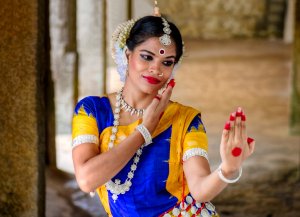
Madhulita Mohapatra
I have been visiting Bangalore to attend festivals organized by few institutions among which for past four years I have appreciated the work of a couple, Madhulita Mohapatra and her husband Imran, who have for past seven years been arranging Naman Odissi dance festival, through their Nrityantar Odissi dance institution, raising funds on their own, without any sponsorship from other quarters. Madhulita is a qualified Cost Accountant and has M.Com and Management degrees to her credit. However, classical Odissi dance being her passion, she moved with her husband to Bangalore some ten years ago and started teaching Odissi to young children in a Government school. Then she established Nrityantar Odissi centre teaching young dancers besides children and within a brief span of three years, won admiration for her teaching abilities. Outside Bhubaneswar, now Bangalore has become a second important city for festivals of Odissi dance. Other Odissi dancers support each other and have learnt to co-exist instead of competing. That has augured well for Odissi as a classical dance form to be accepted on par with Bharatanatyam. It seems Bangaloreans have shown their catholic attitude and have transcended narrow parochialism. 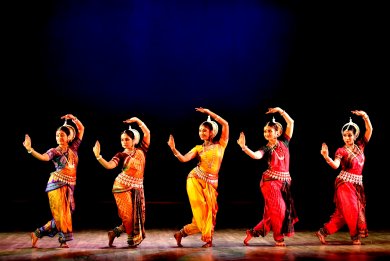 Madhulita Mohapatra's students 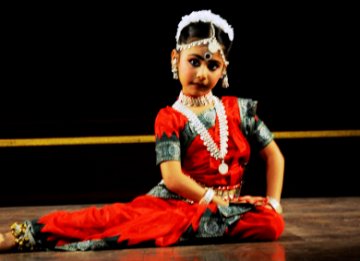 Angeline Anvee ADA Rangamandira is a compact auditorium bang opposite Ravindra Kalakshetra near Town Hall. On August 6 was the annual function of Nrityantar featuring almost 200 students! Besides tiny tots, the young dancers in age group of 18 to 25 created good impression for the technique and presentation. A 5 year old dancer Angelina Anvee stole the show with the popular Banamali Odiya song "Murali phunka" - the one who plays the flute, where has he gone? In executing footwork, hastas and naive expressions becoming her age, Angelina, like her another contemporary 5 year old dancer Shrinika showed promise and did her guru Madhulita proud. One would like to see how Madhulita trains children. Madhulita's own choreography of Pallavi set to Malkauns raga, performed by a group of five older dancers was an example of her ability to choreograph group numbers. None competed to draw attention to self and there was commendable teamwork. Last year she had presented another Pallavi in Jansammohini raga. Besides her own choreographic work, Madhulita has trained her disciples in choreographic works of other gurus like Guru Kelucharan Mohapatra and others who conduct workshops. Therefore one saw a variety of compositions in Madhulita's repertoire. Even the Odiya pada of Gopal Krishna's "Baju chhi bajare," in which a sakhi tells Radha that her clandestine affair with Krishna is known to all, performed by senior student Radhika succeeded in portraying abhinaya in a telling manner. The Naman Festival on August 7 saw male dancer Niladri Mohanty presenting Shankarabaranam Pallavi credited to Pankaj Charan Das. Since there are few telling examples of Pankaj Charan Das's choreographic works in public memory, one could not distinguish special features of late guru's distinct style. Niladri's Shivastakam was vigorous and also had Guru Durga Charan Ranbir's choreographic touches and mnemonic syllables of Sabdaswarapata lending sound texture. Niladri has to get into physical shape to project proper figure. 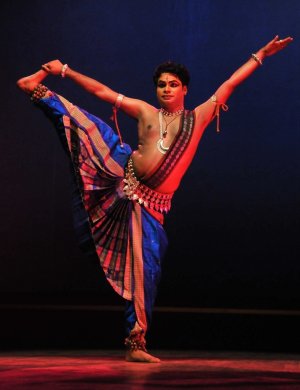 Niladri Mohanty 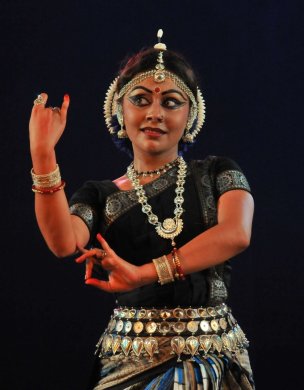 Kaustavi Sarkar Kaustavi Sarkar, disciple of Paushali Mukherjee, Ratikant and Sujata Mohapatra with considerable experience working in Srjan group productions, displayed the discipline and strong technique of Guru Kelucharan Mohapatra. Though petite, she created a favourable impression of a well groomed dancer. Having moved to Columbus, Ohio, she has kept her technique unalloyed and sound. She danced choreographic work 'Varsha' in Miyan ki Malhar raga with aplomb creating images of a dancing peacock, gathering of clouds and evoking mood of rainy season. Ardhanarishwara choreography of Guru Kelucharan Mohapatra was an essay in executing his passages of nritta alternating with Shankaracharya's Sanskrit text with its binary images of Parvati and Lord Shiva. Her lasya, graceful movements typifying Parvati and tandava, vigorous movements becoming Lord Shiva's dance were exquisite. Her rock like steady stances in Shiva's dancing pose and delicate gestures for Parvati were well etched. Her technique stood out for sound training and regular practice. A dancer worth watching. Meera Das, disciple of Guru Kelucharan Mohataptra, has imbibed Guruji's technique and style successfully. Gita Govinda ashtapadi "Sakhi he kesi mathanamudaram" telling sakhi in a flashback her first love encounter with Krishna, had all the sensuousness and delight of recollection conceived by Guruji. With her institution Gunjan in Cuttack, Meera Das maintains the Kelucharan bani with its nuances and subtleties. Her own choreography of 6 dancers to various percussion instruments explored the sound texture of different instruments and increasing joy of young maidens dancing, replete with complicated tala patterns. The finale 'Ahalya,' a dance drama was communicative, creating sympathy for Ahalya who was ravished by Indra in disguise of Gautam rishi to whom she was married and who learning of her being ravished by Indra cursed her to turn into a stone. Her salvation was achieved by Rama's feet touching her and bringing her back to life. Her disciples gave good support, but the impersonation by a female dancer of rishi Gautam poses a problem. In absence of a well trained male dancer in her company she is compelled to manage with her female student. The Indian audiences are by now used to accepting this inadequacy. 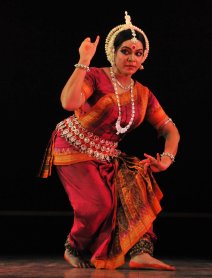 Meera Das 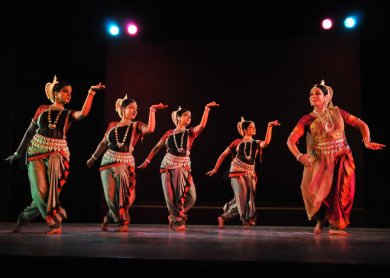 Gunjan dance ensemble One would suggest to Madhulita Mohapatra and Imran to now enlist support from local private sponsors and agencies like Sangeet Natak Akademi and Ministry of Culture, Govt. of India, as are other dancers enlisting in Delhi and elsewhere. Nrityantar has come of age and deserves such support.  Dr. Sunil Kothari is a dance historian, scholar, author and critic. He is honored with Padma Shri, Sangeet Natak Akademi award and Senior Critic Award from Dance Critics Association, NYC. Post your comments Please provide your name and email id when you use the Anonymous profile in the blog to post a comment. All appropriate comments posted with name & email id in the blog will also be featured in the site. |